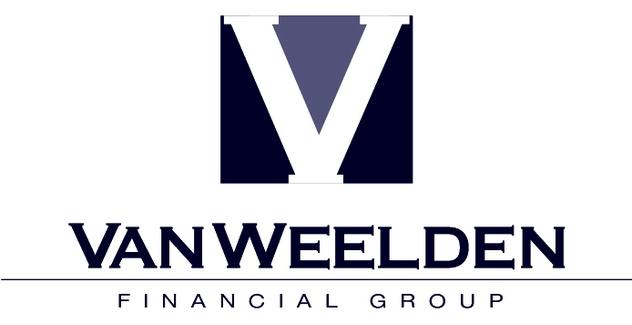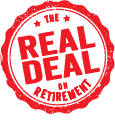

Your Preferred Future
We will begin our deep dive into the details of each of the three steps – starting with Step 1: Planning for your preferred future. Getting this first step right will give you a strong sense of peace regarding the success of your plan.
Your preferred future is what you’ve had in mind all these years and why you’ve been working so hard to get to this point. And now you’re here!This is the fun part, when you get to actually see your dreams materialize into an achievable reality.
Everyone else will tell you that planning for your ideal retirement is all about how much money you have. I’m telling you they’re wrong. They’re all wrong. Retirement is not about how much money you have. Retirement is a cash flow problem. Period. It’s about creating stable, increasing, tax-efficient, lifetime income.
By stable I mean not overly dependent on factors you can’t control, like the stock market, or interest rates, or tax rates. You want to know, just like your paycheck, it’s going to be there.
Increasing because it has to keep up with inflation in order for you to retain your standard of living. So your income will need to increase on a compounding basis, throughout your retirement years.
It also needs to be tax efficient. There’s a saying that only two things in life are certain – death and taxes. But the only thing certain about taxes is that they will exist and we will have to pay them. Unfortunately, what future tax rates will be is anything but certain. If I were a betting man, I’d say tax rates will be much higher ten or twenty years from now than they are today. But regardless of whether I’m right or not, if we want our money to go as far as possible, we can’t ignore the impact taxes are likely to have.
Lifetime income is pretty straight forward. You need your income to last as long as you do. And since we don’t know when you’re going to die, it needs to last practically indefinitely.
Once we’ve created your stable, increasing, tax-efficient, lifetime income, then and only then, do we care about how much money or assets you have.
But these are not the assets you’re relying on to generate your income. It’s precisely the opposite. These are the assets you’re not relying on to generate the income.
These are your discretionary, liquid assets. These are the assets you’ll access whenever you want or need something that’s not included in your ordinary, monthly expenses.
Maybe a furnace or maybe a second home, or a new car, or an extra vacation…
We don’t want you touching the assets that are producing your income, because that would be like taking a bite out of the goose that’s laying your golden eggs. We want separate, liquid assets that we’re not relying on for income.
So since retirement is all about cash flow, then our plan better be VERY detailed when it comes to that cash flow. Let me explain what I mean:
Not so long ago, a couple came into our office, we’ll call them Jack and Jill. They had recently attended one of our evening classes and afterward they signed up for a retirement strategy session. Like many people who attend our classes, they already had an advisor, so they brought their plan with them and we reviewed it together. They had told their advisor how much they thought they’d need each month in retirement. He plugged that into his software. He also totaled up all their investments and assumed a 7% average rate of return based on his recommended portfolio allocation. Then he ran a simulation to determine if they were likely to have enough or if they were likely to run out of money, assuming they had an average life expectancy. That was it. Their entire plan was a very esoteric probability of success, given a number of historic market scenarios.
The simulation didn’t tell them:
Where would their income come from each year?
How much tax they would owe each year?
How much discretionary, liquid assets would they have available from year to year?
What would happen if one of them were to die prematurely?
What would happen if we experienced another 2008 within their first ten years of retirement?
What would happen if one of them required skilled nursing care for an extended period of time?
What they actually had was nothing more than an educated guess. They asked us to design a comprehensive retirement plan for them and now they have the answers to all of these questions. Remember, retirement is a cash flow problem. Solving the cash flow problem requires a detailed, annualized, cash flow projection, not a generalized, overall probability of success.
In our next video, we’re going to dive a bit further into Step 1 by teaching you a simple way to estimate your monthly expenses in retirement, versus having to actually track all your expenses and build a budget, which can be quite onerous. Once we know that information, then from there we’ll begin to determine which resources we want to utilize when, in order to create the most efficient plan.

Plan, Prepare & Review
Let’s start at the 30,000 ft. level and provide a very broad overview of the three steps we’ll use throughout the process. So this is truly foundational.
Let’s start at the 30,000 ft. level and provide a very broad overview of the three steps we’ll use throughout the process. So this is truly foundational.
Here are the three, simple steps I want you to commit to memory: Plan, Prepare, and Review. Let’s keep our focus on the big picture and the underlying philosophy of these three steps by adding a simple phrase to each one:
Step 1: Plan – for your preferred future
Step 2: Prepare – for what might go wrong
Step 3: Review – and adjust on a regular basis
Step 1: Plan – for your preferred future
My wife, Diane, always says it best: She prays daily for every member of our family to have a long, healthy life, and a quick, painless death. That’s what we all want, right?
That’s what makes step one so much fun. We’re preparing for our preferred future.
Step 2: Prepare – for what might go wrong
This is where we consider what would happen if we experience a premature death or disability, or a stock market crash, or major changes in tax rates or inflation – things like that. Some of these issues apply to everyone. And some may be very unique to your own personal situation. It does us no good to have an exceptional plan for our preferred future, but then we completely ignore what might happen to derail that plan.
We need to know that, if life throws us a curve, our entire plan won’t implode.
Step 3: Review – and adjust on a regular basis
Of course, we don’t want to create a plan once and then just forget it. We always tell our clients that the planning process itself is really just the beginning. Any good plan should be highly flexible and should be reviewed and adjusted regularly to ensure it continues to be as effective as possible over time, because over time, things will change in your personal circumstances and also in the world at large. So think of your plan as a living, dynamic thing. Here’s the spoiler alert – we’re going to review and adjust our plan annually. No more, no less. None of this crazy weekly or monthly or even quarterly stuff. You’ll not only drive yourself crazy, but you’ll actually reduce the effectiveness of your plan.
So there you go:
You’re Planning – for your preferred future
You’re Preparing – for what might go wrong
You’re Reviewing – and adjusting on a regular basis (annually – no more, no less)
So you see, at that 30,000ft level, it’s super simple – but extremely important to understand and commit to the process. Three simple steps- Plan, Prepare, and Review.

Retirement Road Map
Three Keys to find the Right Advisor to Build Your Retirement Road Map
There are three important keys you need to understand before you begin to build your retirement roadmap. These three keys are non-negotiable.
If you’re planning on working with an advisor (which we definitely recommend, because you have only one chance to get this right) these keys are critical to ensuring you’re working with someone who can execute this process effectively.
Even if you’re planning to try and do this yourself (which I don’t recommend) you’re still gonna have to rely on third-parties to help you implement each of the different pieces of the puzzle. So if you’re a do-it-yourselfer, these keys are critical in vetting each of those individuals.
So here are the three keys:
Key #1: Truly Independent:
You have to be working with someone who is completely independent of any significant conflicts of interest. This means they cannot be affiliated with any of the following: bank or credit union, broker/dealer, money manager, insurance company, or a mutual fund company. (That’s not an exhaustive list, but those are the main ones to look out for.)
Unfortunately, the vast majority of advisors are, in fact, affiliated with one or more of these types of organizations. This is because many advisors are simply glorified distribution channels for certain products & services. But if you look hard enough, you can find advisors who aren’t. I assure you of that.
Look for truly independent, registered fiduciaries, who use only third-parties to implement their strategies/solutions – meaning they aren’t selling their own products or money management services, or the products or services of an affiliate.
Even with the best of intentions, if these affiliations exist, it will taint the advice you receive, and you won’t know the difference until it’s too late. Objectivity is the key here. So that’s key #1. Truly independent.
Key #2 is Truly Comprehensive
So often, the retirement planning process focuses on investments, with all the other issues being an afterthought. This is a huge mistake.
An effective retirement plan must include the following, crucial areas:
Investment planning – This is very important, but it is not the end all, be all. Income planning – which, contrary to popular opinion, is very different from investment planning. As you’ll see, a really good, reliable plan will identify where every bit of your income is coming from, for every single year, of the entire remainder of your life. Tax planning – This is long-term tax planning, not just what should I do this year or next year, but how do I minimize my taxes over the next thirty years. Healthcare Planning with two major areas: Medicare planning – understanding the system and making sure you have the best coverage for your unique situation & Long-Term Care Planning for the cost of potentially chronic, long-term needs, such as home care, assisted living, or a nursing home. Survivor and Estate Planning – Survival, if we’re talking about a couple, is what happens if someone dies prematurely. When both are gone (if we’re talking about a couple) or obviously an individual upon their death.
You must consider each of these critical areas because they all affect one another, which we’ll explain in detail as we go along. So that’s key #2. Truly Comprehensive. The right advisor will have expertise in Investment, Income, Tax, Healthcare, Survivor and Estate planning – because your plan must encompass each of these five areas.
Key #3 is Truly Focused
You have to work with someone who specializes in retirement planning. I can’t stress this enough. This is because, as I mentioned earlier: The rules of the game – and the keys to success – completely change as you make the transition from accumulation to preservation and distribution. And if you don’t understand that reality, but instead keep on playing by the same rules you’ve followed throughout your accumulation years, the likelihood of optimizing your financial outcome is extremely low.
Unfortunately, most advisors are generalists – trying to be all things to all people in order to cast as broad a net as possible to gather as many assets as possible. Because that’s how advisors get paid. They don’t get paid for: Social Security planning, or Medicare Planning, or Tax planning Survivor and Estate Planning. They get paid for managing assets. So most advisors don’t actually specialize. And just like in the medical industry, there are generalists and specialists. But you don’t want your GP performing your brain surgery, do you?
These are the three keys to finding someone who can help walk you through this process of beginning to build your retirement road map.

Taxes in Retirement
No truly holistic retirement plan would be complete without thoroughly addressing long-term tax planning. After all, the difference between $10,000 a month of taxable income and $10,000 a month of tax-free income is dramatic.
So while the Bucket Plan is the best way to structure your financial assets to tackle today’s market challenges while meeting your immediate, short-term, and long-term goals, you also need to consider the tax consequences of all those assets you’ll be relying on to generate your retirement income over the next 30 years or more.
In order to better understand this, we need to divide your assets into three categories: Tax Deferred, After Tax, and Tax Free.
Tax deferred assets are not taxed as they grow, but they are taxed when they are withdrawn for use.
After Tax assets may or may not be taxed as they grow, but they are never taxed just because you withdraw them for use.
Lastly, tax-free assets are never taxed on their growth, nor when they are withdrawn for use. (spoiler alert – these are the best assets to have in retirement!)
The biggest problem I see is that people these days tend to have the majority of their money in tax-deferred assets, because we’ve all been encouraged to pour money into our tax-deferred retirement plans. The idea being that we’ll be in a lower tax bracket when we retire. But unfortunately, these are the worst assets to have during retirement because they’re the most taxable.
You see, while it’s true you might get a tax deduction when you place money into your tax-deferred accounts, it is still taxable. You’re simply putting off paying the tax. Think about it this way – you’re choosing to not pay tax on the seed you’re planting, but you will have to pay tax on the harvest you reap down the road. So if you place $10,000 into a tax-deferred account today, you might save $2,000 in taxes. But if that $10,000 grows to $40,000 over 20 or 30 years, you will owe $8,000 when you go to spend it – and that’s assuming tax rates never go up!
The second biggest problem I see is that most people don’t incorporate long-term tax planning into their retirement plan. So they never diffuse this tax time bomb and then at age 70 or 72 – bam! It’s too late. I meet with lots of retirees who can’t believe they have a tax problem at age 72, because no one ever explained it to them, much less helped them design a solution. And most of these people have advisors! Unbelievable!
Most people, including accountants, only think about taxes in terms of this year, or maybe next. We want to help you think about taxes in terms of the next thirty years!
This is why it’s so important to have a detailed retirement income plan that considers the interactions between social security, pensions, tax-deferred, after-tax, and tax-free income sources over time.
We really just scratched the surface here in terms of taxes in retirement, but if you’d like to learn more about creating a tax-free retirement, just call the office and schedule an in-person or virtual appointment. We serve clients throughout the US and we’d be happy to help you, too.

